

A SCHOOL FOR AND BY FIRST NATIONS
First Nations Executive Education (FNEE) offers short leadership programs that have been developed specifically to meet First Nations needs.
OUR NEXT ENTREPRENEURSHIP COHORT WILL START ON NOVEMBER 6.
THERE ARE STILL A FEW PLACES LEFT.
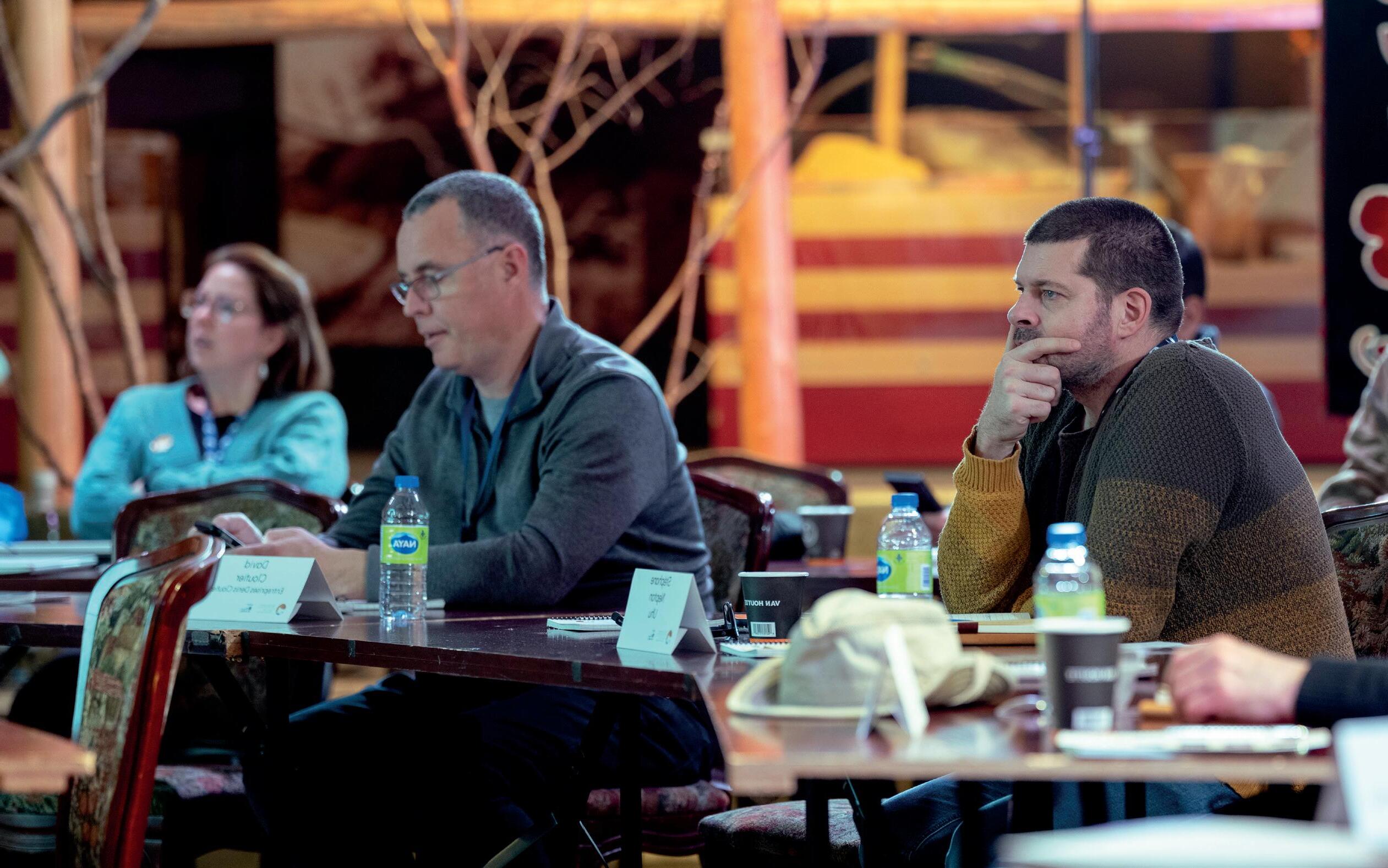



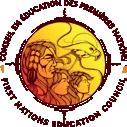








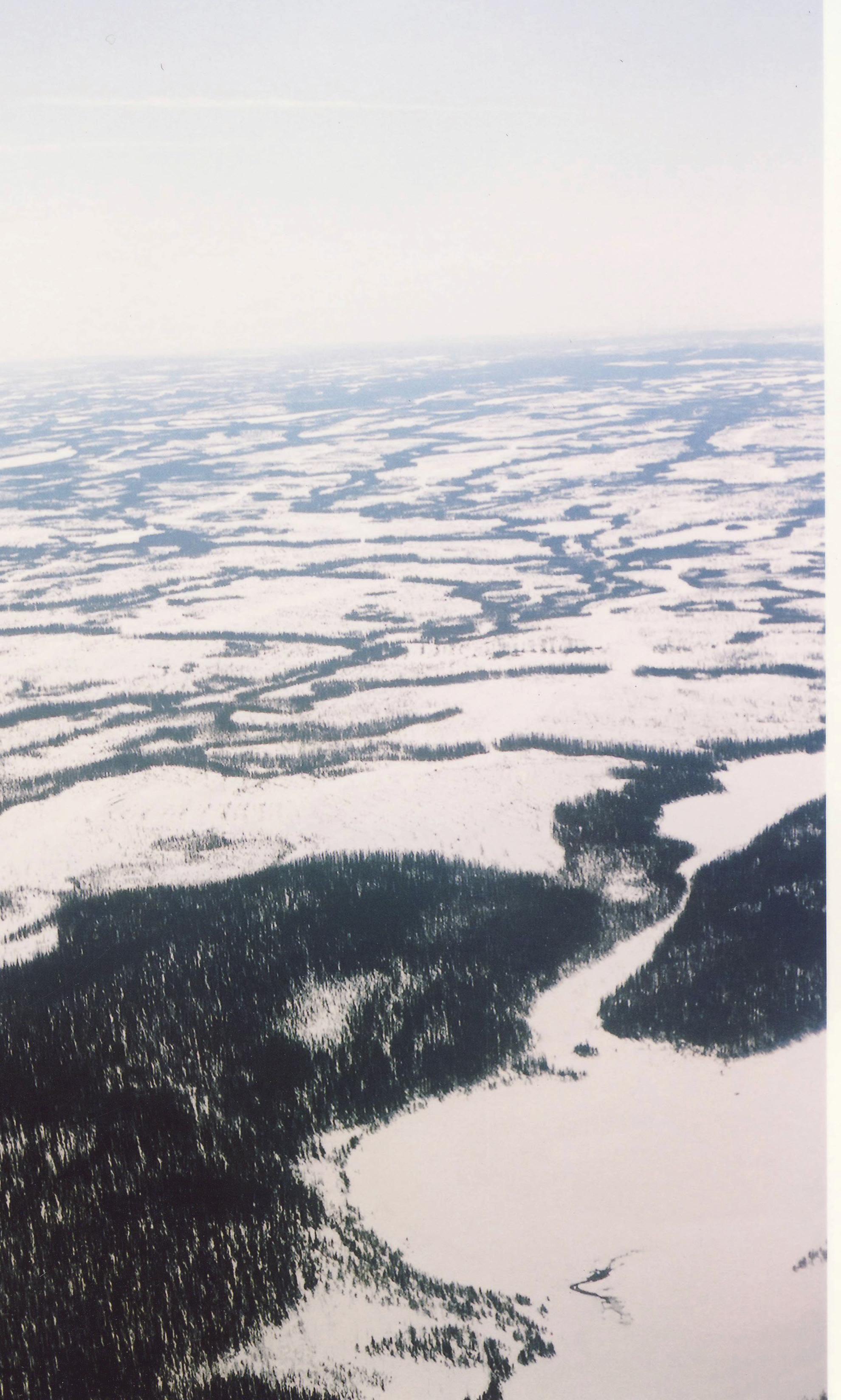





Photo by Willy Bosum
by Will Nicholls
Law enforcement for Indigenous Peoples has always been a subject that mainstream Canada rarely pays attention to. In fact, many Canadians are not aware of the different ways that justice is applied toward Indigenous members of society.
Most Canadians know about warrants required for searches of homes. In Mistissini at one time, the RCMP would go into homes without a warrant, search clothes and packets of yeast. The clothes to try to determine if they were hiding children that they would grab for the residential school system. If there were a certain number of yeast packets the man of the home would be arrested and fined under suspicion of brewing beer.
The fine was small – around $10 or so. In many cases, as my grandfather was a fur trader, he would pay the person’s fine. If he wasn’t around, then the person was taken to Amos where he would spend some time in jail and then have to find his way back to his community without money or food.
That was part of the reality we lived under. A reality that ignored the legal rights that non-Indigenous people enjoyed. It is systematic racism that continues to this day.
Take the story of Allan Woodhouse, a young Indigenous person with no criminal record who moved to Winnipeg to work in the early 1970s. In 1973, a man named Ting Fong Chan was killed by persons unknown. Woodhouse, who spoke little English, wasn’t in the area and had nothing to do with the murder, but police forced him to sign a confession.
Woodhouse, along with three others, always maintained their innocence. But they faced an all-white jury. Never a wel-
come moment for any Indigenous person or family looking for justice.
Fortunately, decades later Woodhouse heard about the Innocence Canada group and asked for help. That organization went to work and contacted then-federal Justice Minister David Lametti, who ordered a new trial in 2023 for Woodhouse and co-accused Brian Anderson after concluding there had been a miscarriage of justice in their case. Both men were acquitted this July.
Meanwhile, Manitoba Court of King’s Bench Chief Justice Glenn Joyal acquitted Woodhouse’s brother Clarence in the same case on October 3. The court heard testimony that the case against Woodhouse and the three others convicted involved systemic racism, police brutality and forced and false confessions.
“I’m sorry on behalf of the entire administration of justice and the institution I lead and the system in which I’m proud to work,” Justice Joyal told Clarence Woodhouse. He said every court should
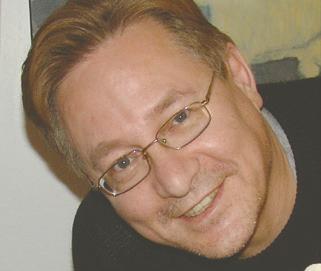
be looking at “judicial reconciliation” where matters of racism are concerned.
A third Woodhouse brother convicted in the same case, Russell Woodhouse, died in 2011. His case is under review for a posthumous acquittal.
Innocence Canada has raised important questions about systematic racism that need to be addressed not only in Manitoba but all across Canada. They would like to talk with both federal and provincial governments about righting wrongs that the criminal justice system has done to Indigenous peoples, not only in the past.
Allan Woodhouse and Anderson have filed lawsuits against the system that wrongfully convicted them. Part of the lawsuit says that despite the lack of speaking English fully an interpreter was never provided. It is something many Indigenous people have experienced in the just us system within the different tiers of the Canadian justice system.
That
was part of the reality we lived under. A reality that ignored the legal rights
that non-Indigenous people enjoyed
The Nation is published every two weeks by Beesum Communications EDITORIAL BOARD L. Stewart, W. Nicholls, M. Siberok, Mr. N. Diamond, E. Webb EDITOR IN CHIEF Will Nicholls DIRECTOR OF FINANCES Linda Ludwick EDITORS Lyle Stewart, Martin Siberok MANAGING EDITOR Randy Mayer STORY COORDINATOR Patrick Quinn CONTRIBUTING WRITERS S. Orr, P. Quinn, N. Fedosieieva DESIGN Matthew Dessner SALES AND ADVERTISING Danielle Valade, Donna Malthouse THANKS TO: Air Creebec
CONTACT US: The Nation News, 918-4200 St. Laurent, Montreal, QC., H2W 2R2 EDITORIAL & ADS: Tel.: 514-272-3077, Fax: 514-278-9914 HEAD OFFICE: P.O. Box 151, Chisasibi, QC. J0M 1E0 www.nationnews.ca EDITORIAL: will@nationnews.ca news@nationnews.ca ADS: Danielle Valade: ads@nationnews.ca; Donna Malthouse: donna@beesum.com
SUBSCRIPTIONS: $60 plus taxes, US: $90, Abroad: $110, Payable to beesum communications, all rights reserved, publication mail #40015005, issn #1206-2642 The Nation is a member of: The James Bay Cree Communications Society, Circle Of Aboriginal Controlled Publishers, Magazines Canada Quebec Community Newspaper Assn. Canadian Newspapers Assn. Les Hebdos Sélect Du Québec. Funded [in part] by the Government of Canada. | www.nationnews.ca | facebook.com/NATIONnewsmagazine | Twitter: @creenation_news




An architectural jewel
Odea tower celebrates Cree values in modern architecture
by Natalia Fedosieieva
Cree Regional Economic Enterprises Company (Creeco), the parent company of Eeyou Eenou Realty Properties, celebrated the inauguration of Odea, its landmark 26-story mixed-use residential building on Boulevard Robert-Bourassa in Old Montreal on August 22.
Located on a Cree-owned site, the $200 million tower with 68 condos, 367 rental apartments and commercial space features a giant canoe shape on its southwest corner.
Creeco President Derrick Neeposh said the canoe reflects the spirit and heritage of the Cree Nation and is significant for all Indigenous peoples in Canada.
“It is a symbol that is very important to our history and culture as Cree people,” Neeposh told the Nation. “We also took into consideration the strong connection with the fact that Indigenous people used the canoe to navigate the rivers of our country. Indigenous culture is a part of modern architecture.”
Neeposh said the inauguration was an opportunity to meet with tenants and condo owners.
“Many of them didn’t know why the design was done this way,” he explained. “They were all impressed, and very proud to be in the building. One condo owner mentioned that it is a modern style
building with a deep connection to Indigenous cultures and nature.”
Creeco bought the property where the building stands in 1996 to serve as the Montreal office for the Cree Nation Government. The board decided to develop the property in 2019 and provided a few concepts to the city. However, the city refused the original proposal, saying it was “too generic.”
“We weren’t offended,” Neeposh said. “But it motivated us to come up with something unique, something relevant to our culture. That is why the canoe-shape design makes the building look connected to nature and fits in with the urban environment. It is a celebration of Cree values with modern architecture.”
Creeco hired world-renowned Anishinaabe architect Douglas Cardinal, who created this design in collaboration with Montreal architecture firm Lemay.
“Cardinal came up with the initial concept of the canoe,” Neeposh said. “This was based on the session that we had with a few Cree Elders. Douglas was very visionary about the whole process.”
The name Odea is inspired by the Cree word “ode,” meaning canoe, “a symbol subtly and elegantly integrated into the building’s architecture”, which combines various architectural parts “that evoke stone, wood, greenery, nature and light,” Creeco stated in a press release.
“Odea Montreal is more than just a real estate project. It is a tangible expression of our collective vision and our commitment to building a prosperous future for our nation and beyond. This project embodies our history, our resilience and our desire to see our culture thrive in an urban environment,” stated Grand Chief Mandy Gull-Masty.
Claudine Duperre, marketing director at real-estate developer and project partner Cogir Immobilier, believes the Odea building is important for Montrealers in a sense of culture.
“On one of the busiest streets of the city the canoe design gives a strong presence of the Cree community in Quebec,” she said. “The architecture of the building is unique. We can see it every time we enter Montreal.”
It’s something like “an architectural bijou,” she added.

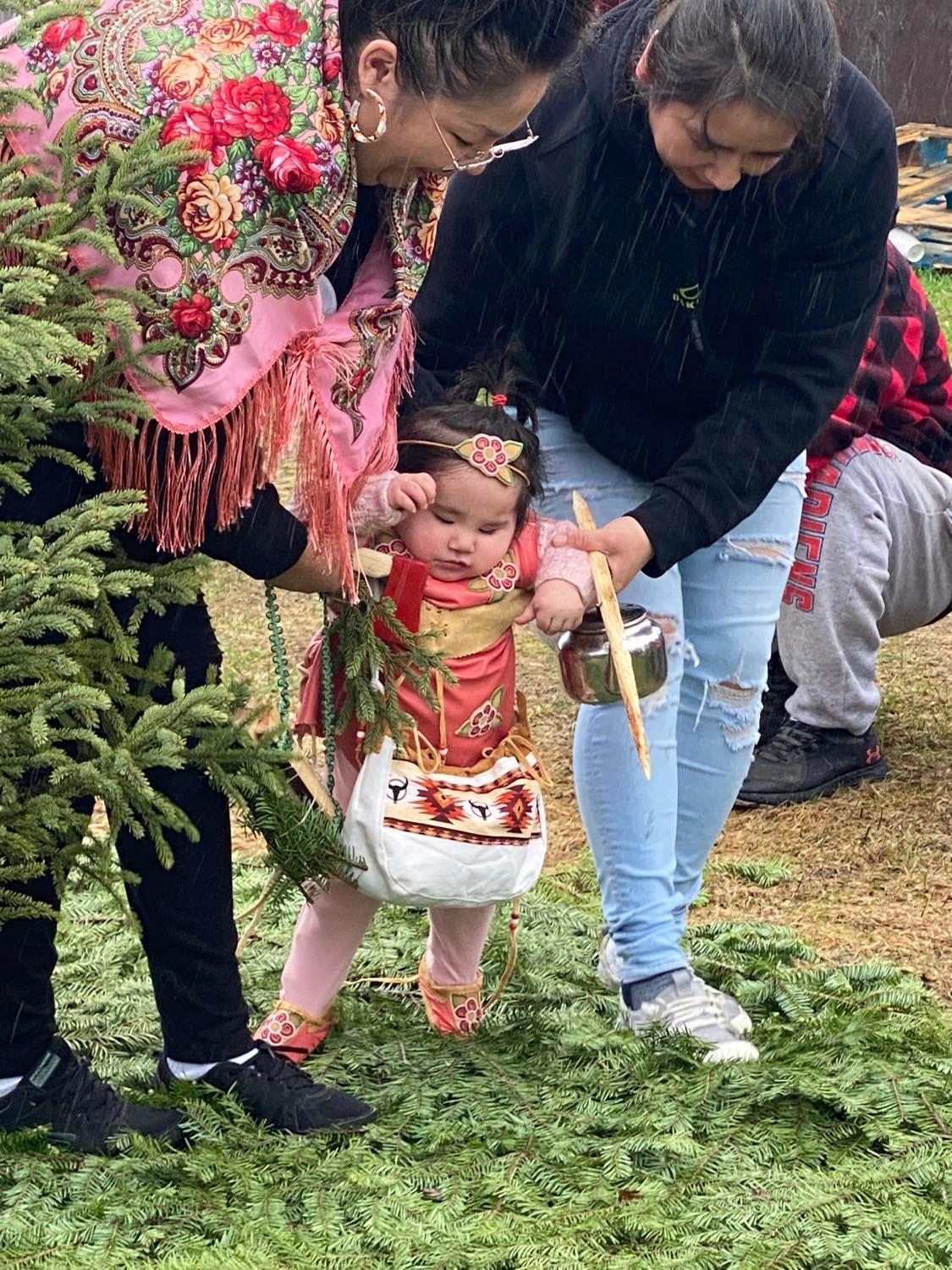

Department of Commerce and Industry


Cultural tourism boom

The annual Cree tourism conference hosted non-Indigenous delegates for a first time as it gathered operators and partners in Ouje-Bougoumou September 18-19 to discuss the future of tourism in Eeyou Istchee.
Under the theme “Reconciliation: Both Journey and Destination – The Power of Indigenous Tourism,” the event delivered various workshops on cultural authenticity, sustainable tourism, international marketing and reconciliation. It was hosted by the Cree Outfitting and Tourism Association (COTA) in collaboration with Indigenous Tourism Quebec (ITQ) and the Indigenous Tourism Association of Canada (ITAC).
COTA executive director Robin McGinley believes reconciliation is the path for people to acknowledge past difficulties and build positive relationships with non-Indigenous partners.
“Tourism is a tool not only for Natives to work together,” she noted. “It is important to work with our neighbours to provide a good experience for visitors.”
Historically, the Cree followed seasonal animal migrations, travelling by canoe in summer and by snowshoes and toboggan in winter. According to McGinley, people are increasingly interested in learning these traditions.
“I’ve seen the trend is there,” she said. “But there is a lot more to do. Visitors coming from the south can learn about our culture. That helps them to get a better understanding of our reality.”
In her opinion, this year things are moving even better. For instance, the Nibiischii Corporation will remain open this winter, welcoming guests throughout the year for the first time.

“We are fortunate because we have COTA and Eeyou Istchee Tourism,” she said, “We have good relations with government – primarily it is funding, but sometimes it is connecting with resources that we are might not be aware of. It is really about networking and learning.”
Nibiischii executive director Mireille Gravel is responsible for ensuring people feel Cree culture everywhere – in the cabins, in the activities, on the website. She says guests always learn something about Cree culture, even about flora and fauna, during hiking, fishing and cultural activities.
Gravel thinks reconciliation goes through education and encounters. “Our tourism industry is still emerging and Indigenous tourism is even smaller in the regions. So, we need to talk, it is really the way to go,” she insisted.
At the same time, many Quebecers want to get involved in Indigenous tourism. In that regard, the Eeyou Istchee and James Bay tourism associations form “a beautiful model of working together,” Gravel said.
Another issue she mentioned was the loss in revenues when the area was closed for over six weeks in 2023. However, Nibiischii received support from COTA, ITQ and ITAC.
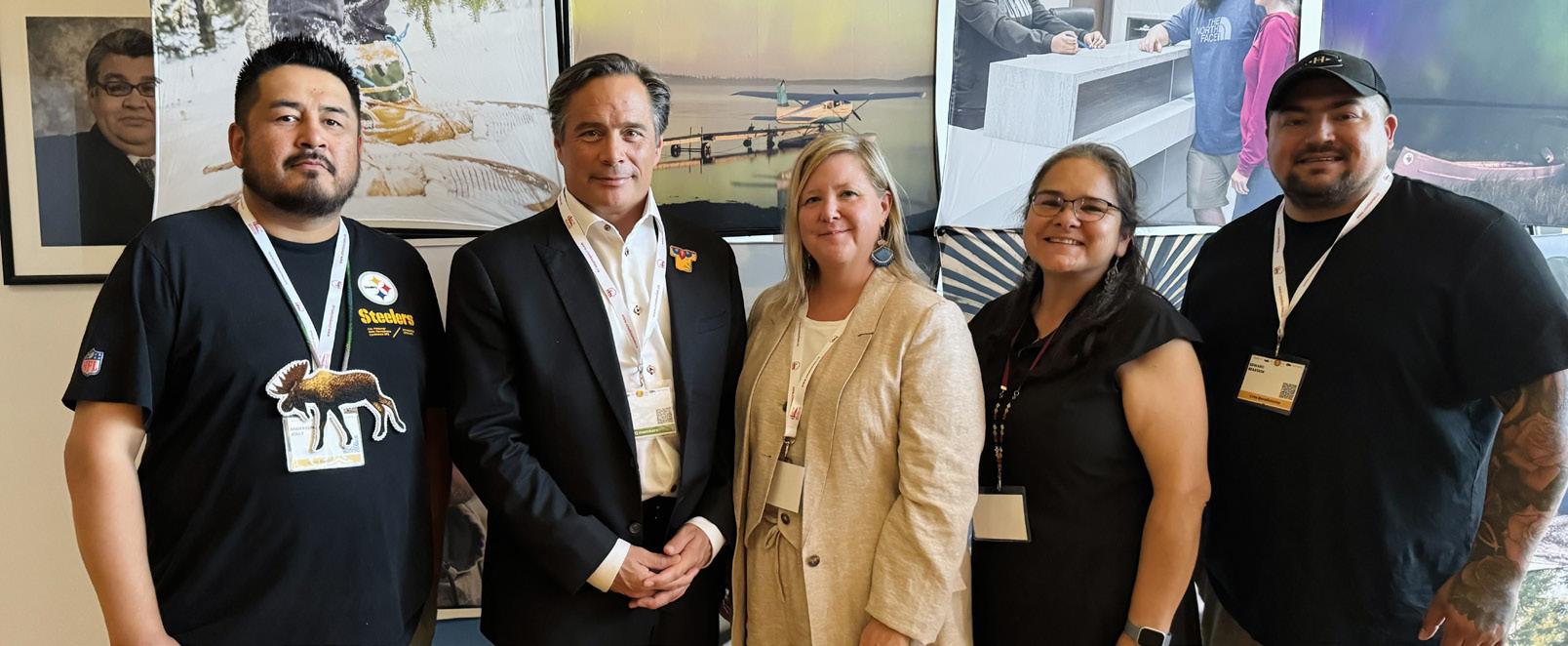
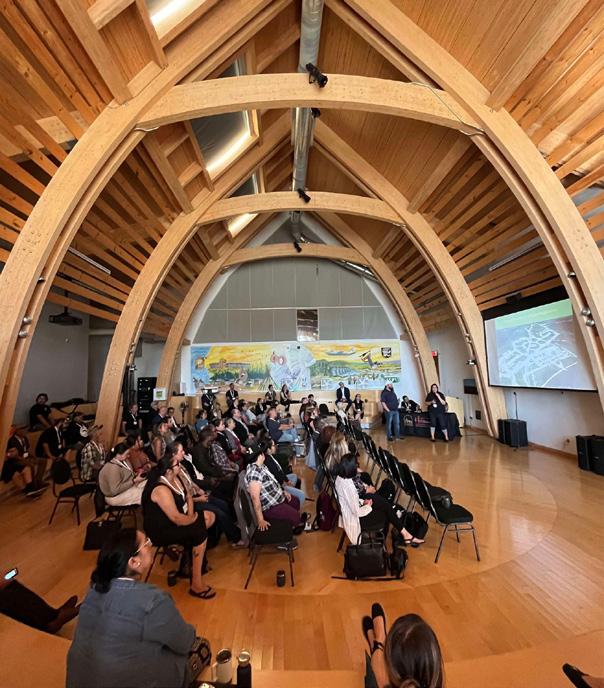
Photos provided by COTA
Cree tourism conference opens dialogue on industry’s future in Eeyou Istchee
Despite the Covid pandemic and last summer’s wildfires, Cree tourism operators kept developing their projects. The conference’s awards gala this year was “a celebration of the work that people are doing and a recognition of their efforts,” McGinley said.
The Nibiischii team is proud of winning the award for best operator of the year. Gravel said everyone worked hard “to make sure operations are smooth, safe and that visitors always leave with the best experience possible.”
According to ITQ statistics, every year Indigenous tourism sustains more than 4,000 jobs and shares its culture with over 1.2 million visitors while generating close to $170 million in revenue.
ITQ marketing advisor Laurence Lainé said a Leger survey conducted in 2022 shows that in the past five years there is a strong interest in Indigenous tourism; specifically, 74% of Quebecers share positive thoughts on Indigenous peoples’ heritage.
“Indigenous tourism in Quebec allows us to build bridges between nations and to develop Indigenous pride in communities and people who work in tourism,” Lainé said. “We talked about marketing, the tourism system. There was also a discussion on cultural preparation, to help understand in which sector we should collaborate.”
The conference included a workshop on ITAC’s Original Original accreditation program, delivered by ITAC president Keith Henry, who believes the program can help the Cree-owned businesses understand tourism industry standards.
“The world doesn’t necessarily know the difference between the Cree community in northern Quebec versus the Coast Salish people in BC,” he said. “So, we created this program to group all of our businesses in one brand to help promote Cree businesses.”
Domestic demand for Indigenous tourism is growing. A recent survey demonstrates that eight out of 10 Canadians are serious about supporting Indigenous heritage, Henry said.
“To help businesses we’ve invested heavily over the years in development and marketing activities,” he said, “We’re still spending more time up north in Quebec to make Indigenous destinations attractive to the world, not just Canadians.”
Cree culture is a major draw, Henry insisted.
“The culture is so strong,” he said. “The Cree people still speak their language, they still practice their culture, so they need the most updated Indigenousled research to know how to promote their businesses if they want to bring other people in.”












REGIONAL GENERAL ASSEMBLY
NOVEMBER 6 AND 7, 2024
CHISASIBI, IIYIYIU ASCHII
Join us for the Cree School Board’s 5th Regional General Assembly through Livestream or Radio Broadcast. This event will bring together delegates from iiyiyiu aschii/Eeyou Istchee to foster connections and collaboration.
GUIDED BY OUR CORE VALUES:
COURAGE HONESTY HUMILITY COMPASSION RESPECT
SHARING WISDOM TEAMWORK TEACHINGS
ACCESS: LIVESTREAM & BROADCAST
Sessions will be available via livestream and local radio.
Stay tuned for the event schedule and event link.
We look forward to welcoming you!




Whapmagoostui
mine clean up
In the second week of October, the Abandoned Mining Exploration Sites coordinator from the Cree Nation Government’s environmental department was in Whapmagoostui working jointly with community members and land users to clean up hazardous materials.
It’s estimated there are close to 500 abandoned mining exploration sites in Eeyou Istchee. So far, 95 of these sites have been cleaned up, including some that were very small without fuel and other toxins that have been reclaimed by the forest. Some abandoned camps have been restored by new prospecting companies which have taken over the claims.
In 2005, the CNG conducted consultations on this issue, gathering insights from tallymen and land users. In Whapmagoostui, 42 sites of concern were identified.
In 2018, Quebec and Cree governments, along with the Fonds Restor-Action Cri mining industry group, signed an $11 million agreement to restore the territory’s abandoned sites. This past June, local teams were trained and this month a cleanup crew is travelling by air to remove anything that can be done safely, burn debris and take soil samples.
“It took a very long time to get the process launched,” said Grand Chief Mandy GullMasty. “It’s not just picking up a barrel, putting it on a trailer, shipping it somewhere. It is hazardous waste. You have to
be very aware of the protocols in place.”
The cleanup can’t come soon enough for Whapmagoostui Elder John Rupert, who has long been asking for the restoration of his trapline that provides 80% of what his family eats. Two years after a prospecting camp arrived in 2006, they abandoned about 300 fuel barrels, 100 propane tanks, heavy machinery and 14 cabins, along with fridges, insulation and other equipment.
“It’s not the same anymore,” Rupert told CBC. “I cannot hunt there. All the toxic fuel and garbage in that lake. It was very important for me to set up my cabin there. Because there were plentiful of fish and other mammals to feed my family and provide food for myself also.”
Echaquan rallies denounce health inequities
For the fourth year in a row, several commemorative vigils in memory of Joyce Echaquan were held across Quebec, demanding that the provincial government adopt Joyce’s Principle and finally acknowledge the existence of systemic racism and discrimination.
Over 100 people, including delegations from the Atikamekw communities of Manawan and Wemotaci, gathered in Montreal to pay tribute to Echaquan
The 37-year-old Atikamekw mother of seven died at a Joliette hospital on September 28, 2020, livestreaming moments earlier derogatory and racist remarks from hospital staff. Indigenous groups introduced Joyce’s Principle in response, which aims to guarantee all Indigenous people the right to equitable treatment in the province’s healthcare system.
Over 100 people, including delegations from the Atikamekw communities of Manawan and Wemotaci, gathered in Montreal to pay tribute to Echaquan. The rally began with an opening prayer by Mohawk activist Ellen Gabriel, followed by a musical performance by the Pow Wow Rangers and several speeches.
“The community is still waiting for some kind of action that will provide closure, especially for the close relatives of Joyce Echaquan, for [her] community of Manawan,”
said Ghislain Picard, Chief of the Assembly of First Nations Quebec-Labrador, who like most attendees wore a purple shirt with a photo of Echaquan printed on the front.
Last year, Quebec’s Indigenous Affairs Minister Ian Lafrenière introduced Bill 32 requiring healthcare workers to adopt a “cultural safety approach” – that included mandatory training on Indigenous cultural and historical realities. He said Quebec is “combating racism in all its forms by prioritizing concrete actions, while integrating the essential principles of Joyce’s Principle into our laws.”
Innu surgeon Dr. Stanley Vollant, newly appointed to the Board of Directors of Santé Québec, said systemic racism remains a problem in healthcare and “people are coming to hospital very late or not coming because they are afraid they’re going to be not treated as well as other people.”



by Patrick Quinn, Local Journalism Initiative Reporter
The fourth annual National Day for Truth and Reconciliation was honoured in the Cree Nation with two moving events in Mistissini. With Cree and provincial leaders in attendance, Chief Michael Petawabano announced the future location of a monument to honour community members who attended residential school.
Standing as a symbol to commemorate the resilience of survivors and the memory of those who never returned home, the monument will become a place of healing for those still carrying the weight of residential school experiences and intergenerational trauma. Parents would gather at this beach where the access road to Mistissini then ended, eagerly waiting for their children returning home from residential school each June.
It was here that William and Betsy Rabbitskin waited for their nine-year-old daughter Juliette in 1966 before learning from other children that she had died in La Tuque earlier that spring. Their devastation was felt throughout the community, and they never had the opportunity to grieve their loss.
On September 30, Juliette Rabbitskin was finally laid to rest in her home community after being exhumed from La Tuque 10 days earlier. The long process had been initiated seven years ago by her cousin Emily Rabbitskin, who had been so inseparable from Juliette that many assumed they were twins.
“When they took us at age six, they wanted to separate us, but Juliette kept


Juliette Rabbitskin’s story a reminder that Every Child

holding onto me, so they put us in the same room as my older sister Caroline,” Emily told the Nation. “She was a very sweet little girl. She would always follow me – even to the bathroom.”
Born deaf and mute in 1957, Juliette pronounced her name “Jewwah” and would communicate with Emily through sign language. With sparkling eyes and a constant smile, Juliette enjoyed sewing and helping with chores like folding clothes whenever she could. Although no photograph remains, Emily still remembers her vividly.
Despite being forcibly taken from her parents, who were threatened with losing their family allowance and other vital benefits if they refused, Juliette was like a light in that often-dark situation, always ready to offer a loving hug.
When Juliette’s fever spiked for days after a virus outbreak at the school, she was taken to the nurse by Mary Coon and Caroline Rabbitskin, who at age 11 were like big sisters. They never saw her again and later learned she had died that day. With Emily and other children under quarantine, only Caroline and two of Juliette’s brothers were permitted to attend the funeral.
“I always thought that I left something very precious behind, an angel of mine,” said Emily. “It really affected my life. Nobody asked where we wanted Juliette to be buried – for a long time, I felt a lot of anger and pain.”
The determination to bring Juliette home came after first visiting her grave, which was finally located along the cemetery’s

Matters

Homecoming Homecoming


Images provided by Juliet Rabbitskin Loon
treeline all alone. With the help of Ashley Iserhoff, Emily started the process that involved several individuals from Mistissini, the government and the Anglican Church before a successful court hearing on June 6, 2024.
Reverend Bruce Myers, the Anglican Bishop of Quebec, first heard Juliette’s story as a representative at the Truth and Reconciliation Commission in 2013. After the unmarked graves in Kamloops made national news in 2021, Myers reached the family via Reverend George Westgate in Mistissini to discuss bringing Juliette home.
Juliette’s seven surviving siblings approved the move, with younger sister Kathleen Rabbitskin helping to meet key decision makers. Born in 1962 and taken to La Tuque at age four, it was more than a decade later that Kathleen discovered during a visit to her cousins that she had an older sister who had died at the same school.
“I guess it was too painful for my parents to talk about,” Kathleen reflected. “I find we were never happy and there was nobody to hug us or say I love you. All the stuff that parents do with their kids – there was no affection at all.”
Kathleen remembers awful food and living in fear of the staff. Kids were regularly taken into a room and came out crying. Once a teacher boxed her ears in punishment, resulting in subsequent earaches and health problems. While she’s kept contact with some former schoolmates, they never talk about La Tuque.
“When I found out I had a sister named Juliette and had my own child, I named her Juliet,” said Kathleen. “I love it – it brings comfort. We used to stop at La Tuque cemetery. Juliet said, ‘Mom, it has my name on it.’ That’s when she started asking me questions.”
Now it’s Kathleen’s grandchildren asking questions, although she’s sometimes too emotional to provide answers. This reburial has brought her family closure and she’s glad she doesn’t have to travel to La Tuque anymore to visit her late sister.
Juliet Rabbitskin Loon was instrumental in completing the reburial process, communicating with officials in French and moving the bureaucracy along. She called forward her children during her powerful eulogy, demonstrating how young her family members were when Juliette passed.
“They always had this sense of guilt, blaming themselves,” explained Rabbitskin Loon. “I wanted to demonstrate that it wasn’t their responsibility in hope to bring healing to them. They should not have to carry that.”
While the family unanimously expressed feeling lighter following the reburial, the exhumation on September 20 was a more tense affair. It took the whole day to find Juliette’s body, which was finally identified near sunset with her hospital bracelet and two buttons.
Two years after Juliette Rabbitskin Park was inaugurated on the site of the former residential school in La Tuque, busloads of children joined political and religious leaders to honour her memory in Mistissini. Rabbitskin Loon, whose daughter Mariah drew the image printed on commemorative purple shirts, hoped this will unburden her Emily, hospitalized earlier this year with heart issues.
“It’s like a load from my soul was lifted, that’s how happy I was,” said Emily Rabbitskin. “I felt peace after – now people can visit her here at the graveyard. That night I was really drained, and I slept for two days.”
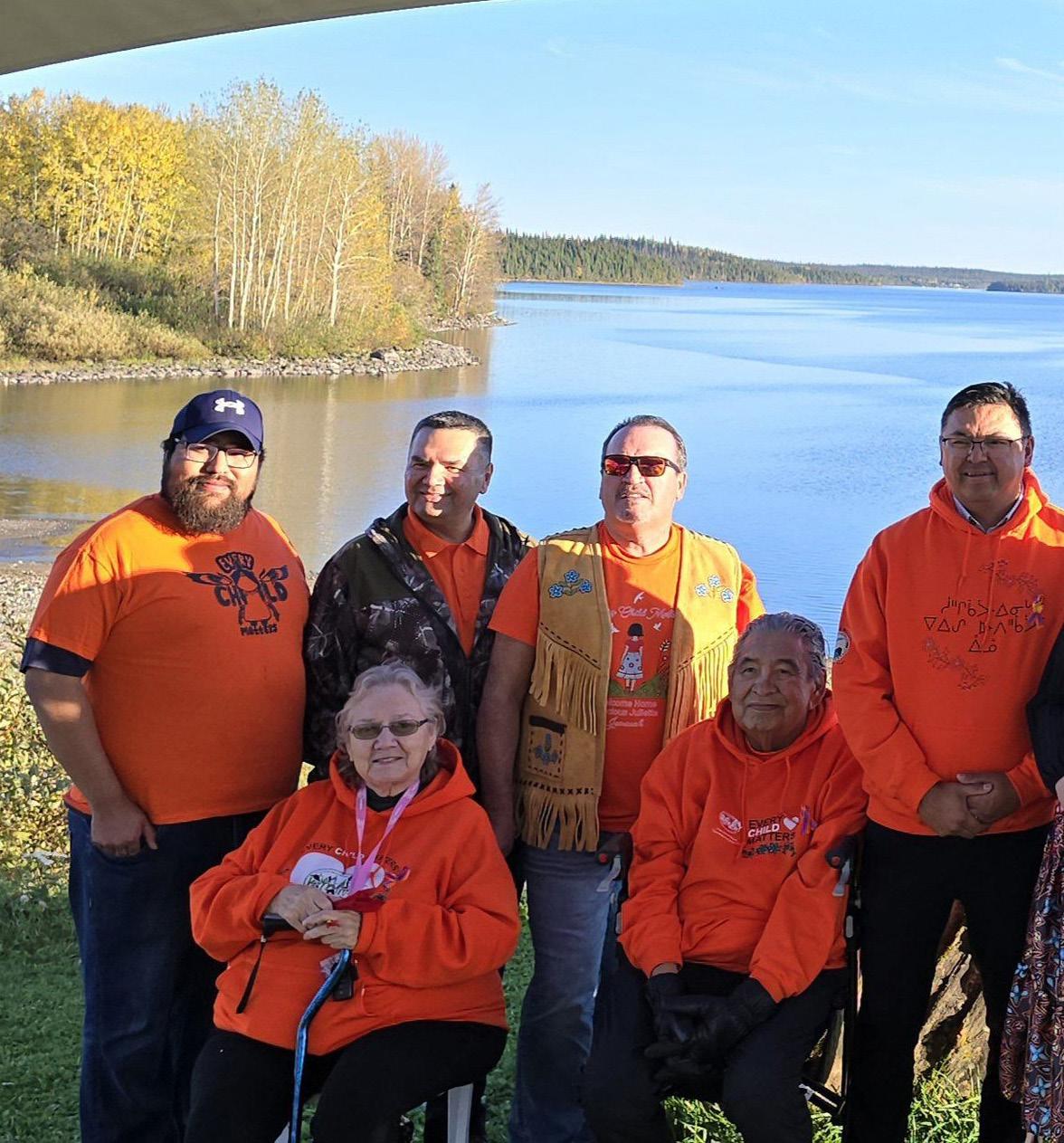
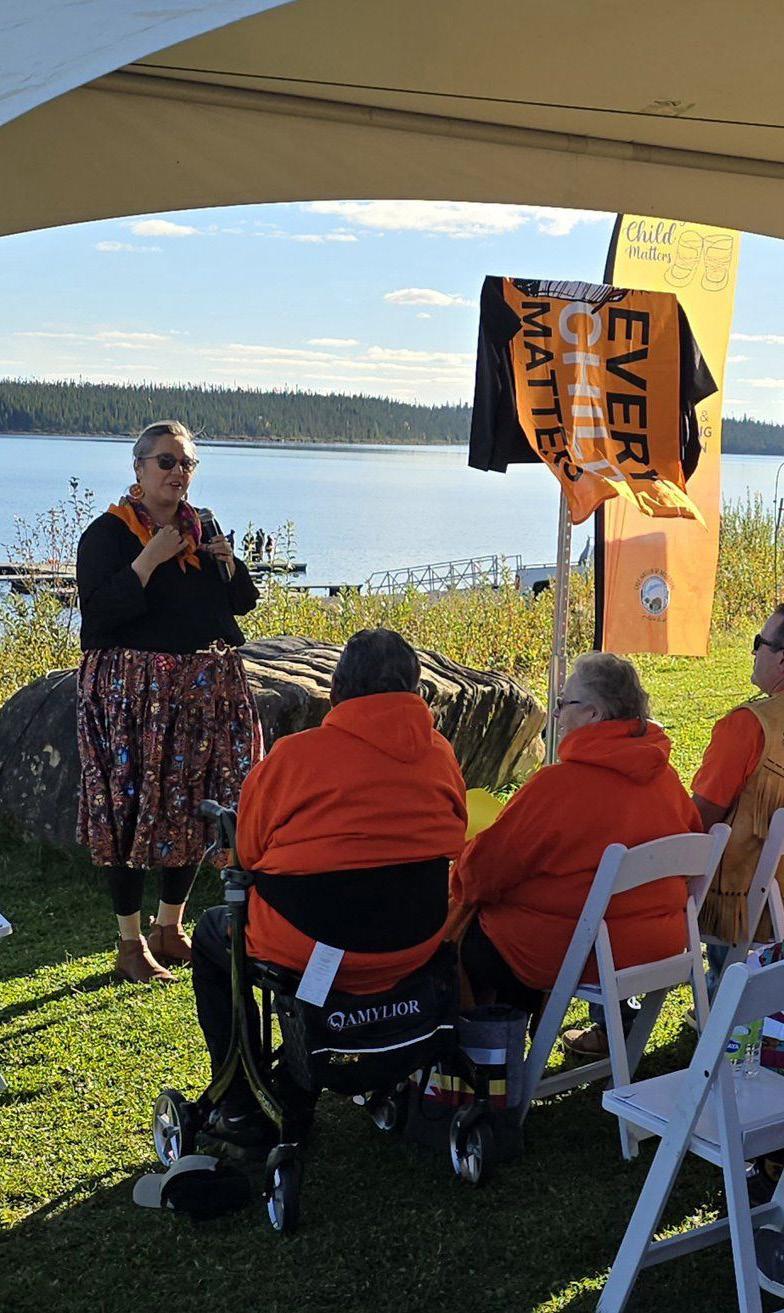
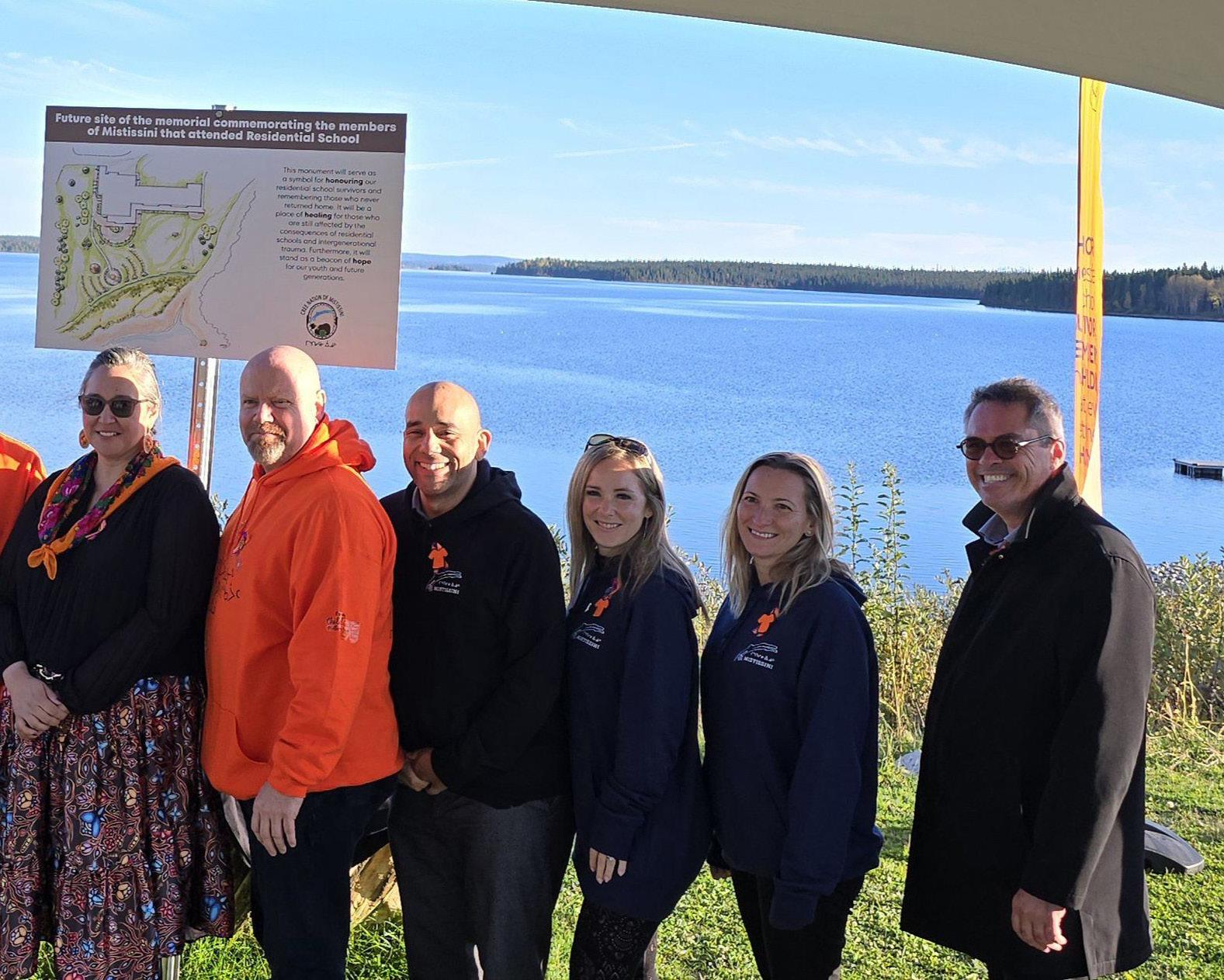

“They always had this sense of guilt, blaming themselves”
- Rabbitskin Loon




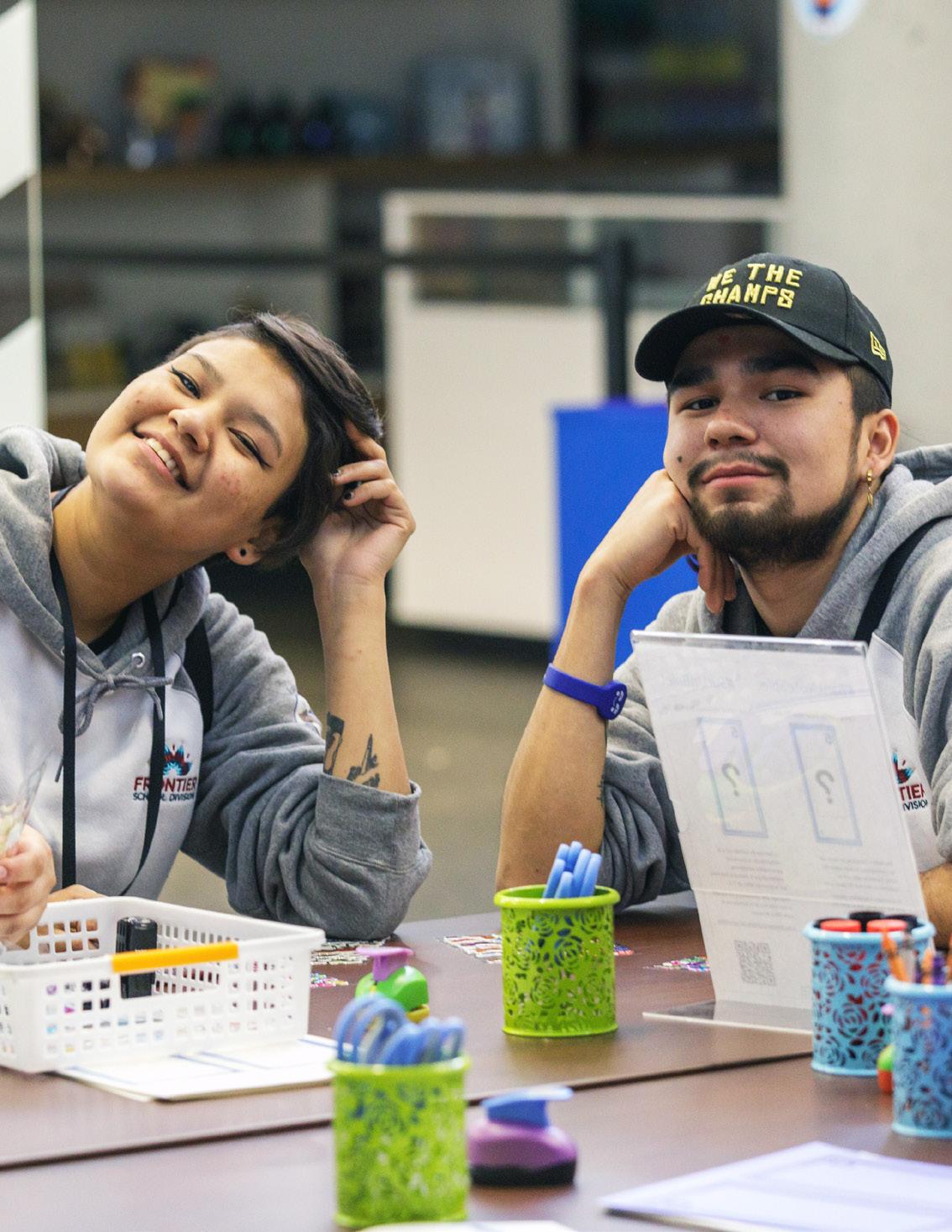


Chisasibi: Eastmain: Mistissini: Nemaska: Ouje-bougoumou: Waskaganish: Waswanipi: Wemindji: Whapmagoostui: 819-855-2120 819-977-2400



A Place to

Ouje-Bougoumou breaks ground on new land-based camp
by Patrick Quinn, Local Journalism Initiative Reporter
Agroundbreaking ceremony was held October 1 for a new land-based camp to be built on an island in Lake Opataca, about a 45-minute drive from OujeBougoumou. Water taxis made the 20-minute trip from “Gerry’s Camp,” where guest speakers, storytellers and a delicious lunch awaited community members.
As a youth development coordinator for many years, Brenda St-Pierre would often hear people express their desire for a camp to host cultural, healing and wellness programs. After a location on Lake Opataca was identified around 2020, an annual general assembly further defined the project before St-Pierre was hired in June 2023.
“I wanted to spearhead this project because it was brought up so often,” St-Pierre told the Nation. “The core of this project is to promote, preserve and practice our Cree culture in all programming. The healing, sense of identity and pride that our land gives.”
The selected island has a special healing energy and cultural history. It was home for the late Robert Bosum and his wife, Emily Capissisit, who adopted many children of the community in the traditional way and treated them as their own, including a non-Native person. One of the carpenters on the construction team was born there 52 years ago.
St-Pierre was happy that Bosum family members were present for the land acknowledgement ceremony, among approximately 50 attendees. The weather was pleasant but windy, making a cold and bumpy ride to the island. The “light lunch” that had been announced turned out to be an extravagant feast with fish and beaver.
Surrounded by mountains, Opataca is one of the lakes at the head of the Broadback River in the Assinica Wildlife Reserve, a popular fishing destination of Mistissini’s Nibiischii Corporation. Part of the island’s appeal is its seclusion, with no traffic noise or
Photos by Willy Bosum
the potential for unexpected arrivals and departures during programming.
“It eliminates the possibility of just quitting and driving off,” explained St-Pierre. “When we’d ask the surrounding territories and camps about bringing in a program, sometimes there wouldn’t be enough space, sometimes there were safety issues, and all of these camps were beside a road.”
The camp will host diverse programs for all ages, from family-oriented events that revitalize Cree language and culture to healing retreats for those struggling with drugs and alcohol addiction. Future partnerships with the Cree school, health and justice departments will be explored.
“Our Elders Council has expressed they don’t want to see programs just for Ouje,” said St-Pierre. “It will be open
for other members of the Cree Nation. This could be somewhere people who have come from long-term treatment or who have been incarcerated could stay to reintegrate themselves back into the community.”
While the current capacity is 30, St-Pierre said that best practices for landbased healing retreats suggest capping attendance at 16. Plans are to finalize construction in the next fiscal year to open for programming next fall and winter, likely becoming fully operational yearround in 2026-27.
The next phase will be to construct two main camps with two sheds, four washrooms, two larger cabins and one small office for one-on-one counselling. St-Pierre is currently finalizing proposals for Phase 3, involving the construction
of 10 lodging cabins, and working with consultants to solidify the governance structure.
Roundtable discussions at this past summer’s AGA considered aspects to include in its operating policies and funding alternatives. Before running any programs, certain equipment and training will need to be established with safety and emergency protocols created and communicated.
“We need to have that safety net built in and known by the staff, partners and participants,” St-Pierre said. “We’re looking at how we can eventually move away from being operated by the band to become its own organization. The Elders want to operate full-time.”
While the new camp will offer holistic healing sessions, there’s no intention of


duplicating the ceremonial approaches currently available at Ouje-Bougoumou’s Maamuu Lodge. As not everyone goes to traditional ceremonies, programming will be “people-focused” with no overt spirituality or religion.
“If people want to bring their smudges, you probably need to ask who you’re rooming with to show respect, but we’re not going to invite a pastor to do a sermon,” explained St-Pierre. “From what I’ve heard from Elders, the land takes care of one’s spirit.”
The most recent traditional healing land-based retreat took place at Maamuu Lodge about a week before the groundbreaking ceremony. In association with the Cree Health Board (CBHSSJB), sweat lodge ceremonies and a fasting/vision
quest were led by Ernie Herodier and Marjorie Icebound.
The Nishiiyuu Council of Elders led the integration of traditional Cree healing methods into CBHSSJB services in 2019, including their connection to long-suppressed spiritual traditions. While the health board celebrated this year’s Indigenous Peoples Day by introducing traditional healers and knowledge keepers into their system, it seems not everyone approves.
Icebound recently posted that they are “not here to recruit followers of the traditional ways.” Clarifying that you don’t need to be “traditional” to purify the mind, body and soul in a sweat lodge, she quoted the late Elder Job Bearskin: “The ceremonies and the drum will come back,
the priests will accept them, but it will be our people that won’t.”
CBHSSJB chairperson Bertie Wapachee asserted that they’re not imposing anything but only providing what the people are asking for. While Christianity remains strong in many Indigenous communities, he believes the Nation is on the right path to healing and that nobody has the right to tell others they’re worshipping the wrong god.
“When I see people sober up and follow the traditional path, I’m happy for them. Just as I’m happy for people who turn Christian and clean up their life,” Wapachee said. “I’m not concerned about the colonial mindset. It will eventually disappear. As long as people are healing, let them be.”
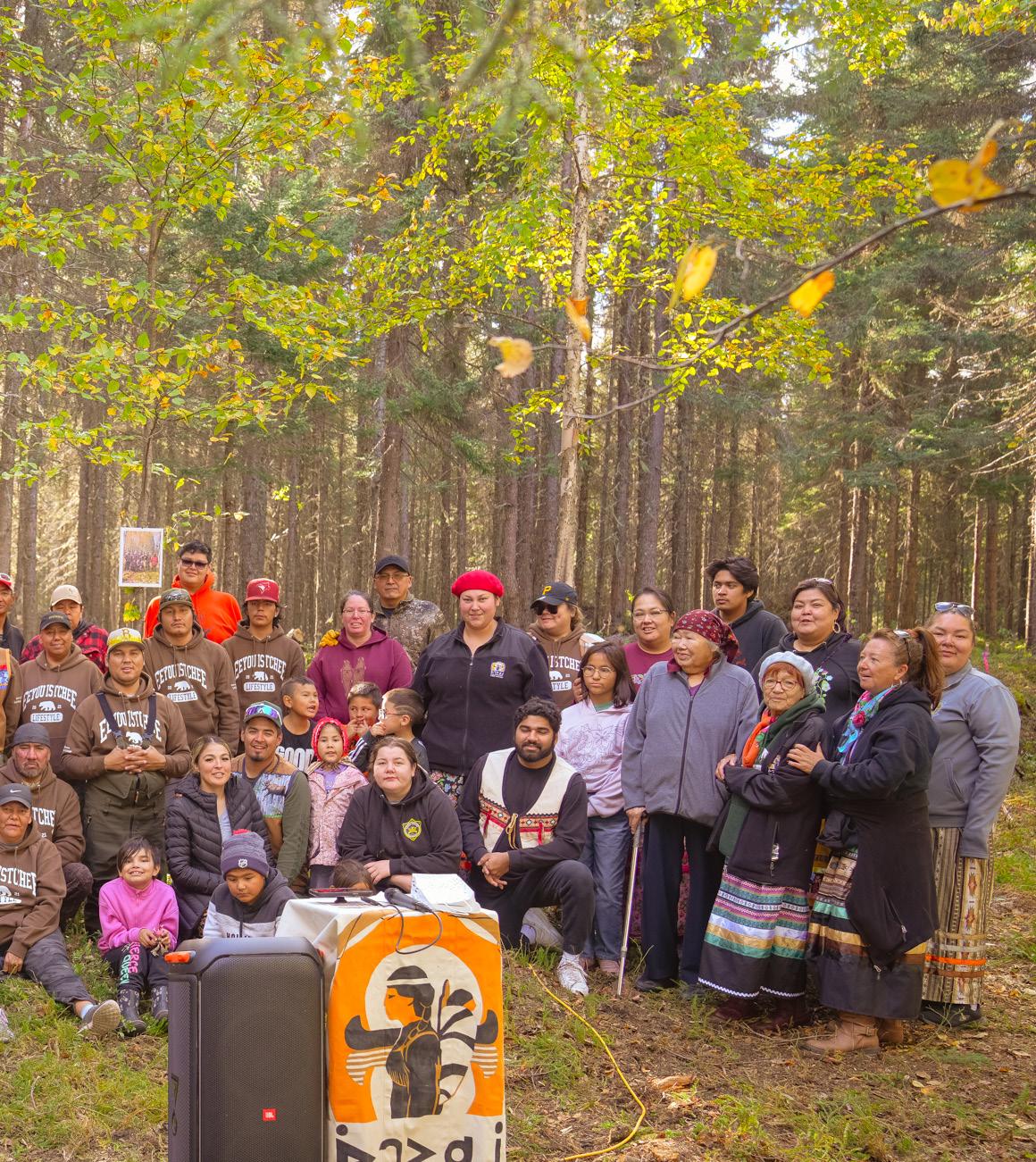




1st
2nd
3rd

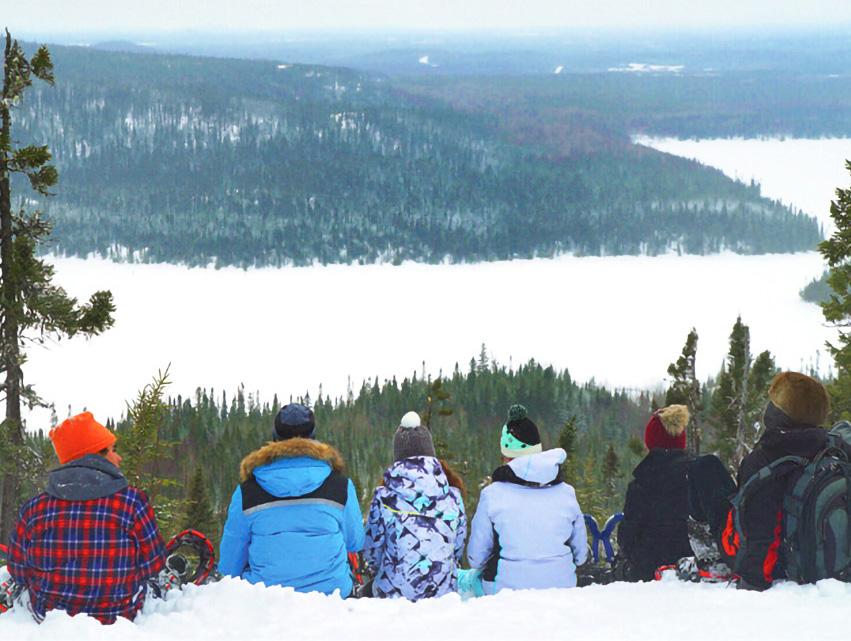




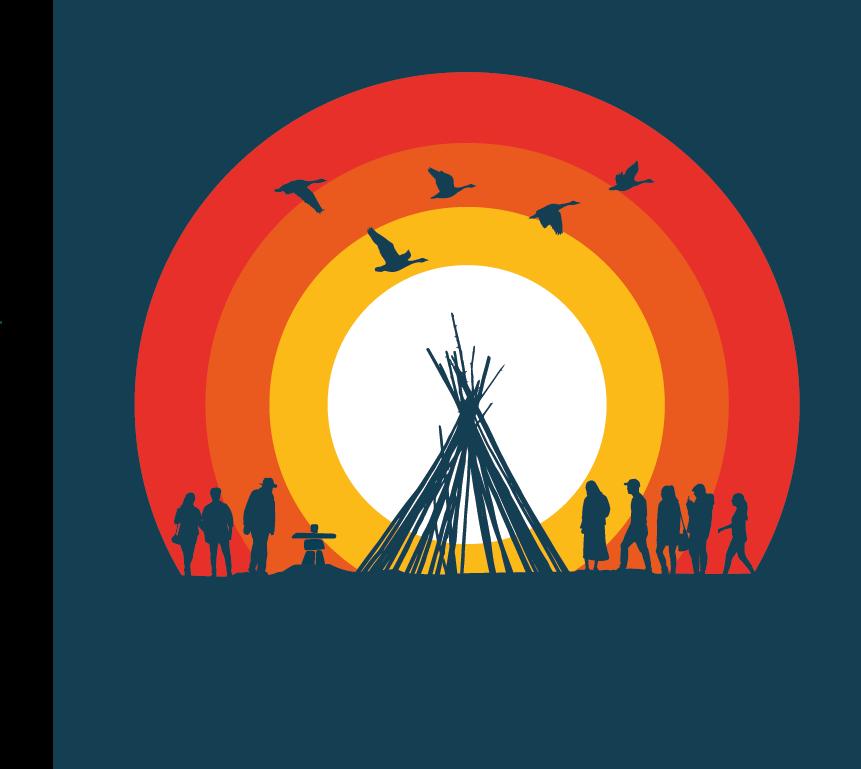








Come home safe Community
Symposium builds resilience for post-secondary students
by Patrick Quinn, Local Journalism Initiative Reporter
Cree post-secondary students in the Gatineau region were invited to a symposium on safety and well-being on September 21 hosted by the Cree Justice Department in collaboration with the Cree Women of Eeyou Istchee Association (CWEIA) and Maanuuhiikuu, the mental health department of the Cree Health Board.
Called “Building Resilience Together,” the symposium included workshops and presentations on street safety, human trafficking and well-being along with opportunities for selfcare therapy, one-on-one counselling and cedar baths. Various Cree entities and regional organizations also hosted information booths.
“We’ve heard some students experiencing their drinks getting spiked, almost getting taken, being followed around, going in the wrong Ubers,” explained co-organizer Viviane Snowboy. “A lot of trafficking is domestic and most times victims know their traffickers. We talked about prevention tips, knowing the signs, what to do if you feel endangered.”
With increasing numbers of Cree students pursuing education in urban environments, the symposium aimed to warn them about dangers to which they may be uniquely vulnerable. Predators may try to exploit students navigating culture shock, schoolwork and budgeting challenges.
“Victimizers will know they are alone in the city, dependent on financial constraints and looking for connections being away from home,” Snowboy said.
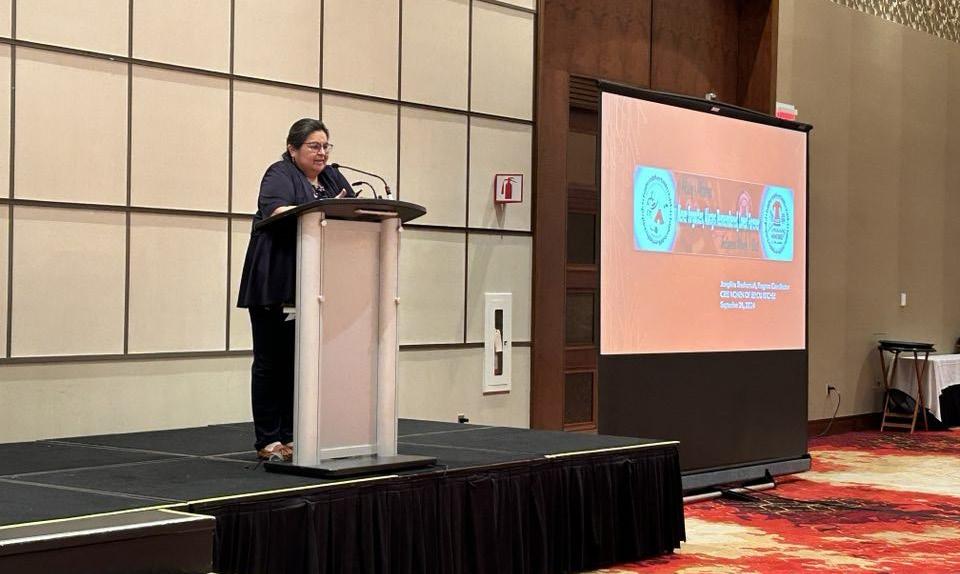

“I try to create a sense of community with the students to keep each other safe. Follow your instincts – if you feel unsafe at any time let somebody know.”
Discussing symptoms of date rape drugs, Snowboy shared that emergency rooms across Quebec now have tests available that can detect over 200 psychoactive substances, such as GHB. Snowboy has heard stories about nightclubs or Gatineau’s Casino du LacLeamy where people don’t remember leaving or got suddenly drunk after three drinks.
“Last year I was at the casino with my friend and she said there’s a man following me,” shared Snowboy. “All of a sudden, her phone detected an AirTag [tracking device]. We were weirded out and went back to our hotel. We did let security know and he was escorted out.”
There are other troubling instances of children nearly being taken at Ottawa’s Bayshore Mall or people being approached by false taxis. Snowboy advised Uber users to confirm the vehicle’s licence matches what’s on the app and to double-check the PIN provided.
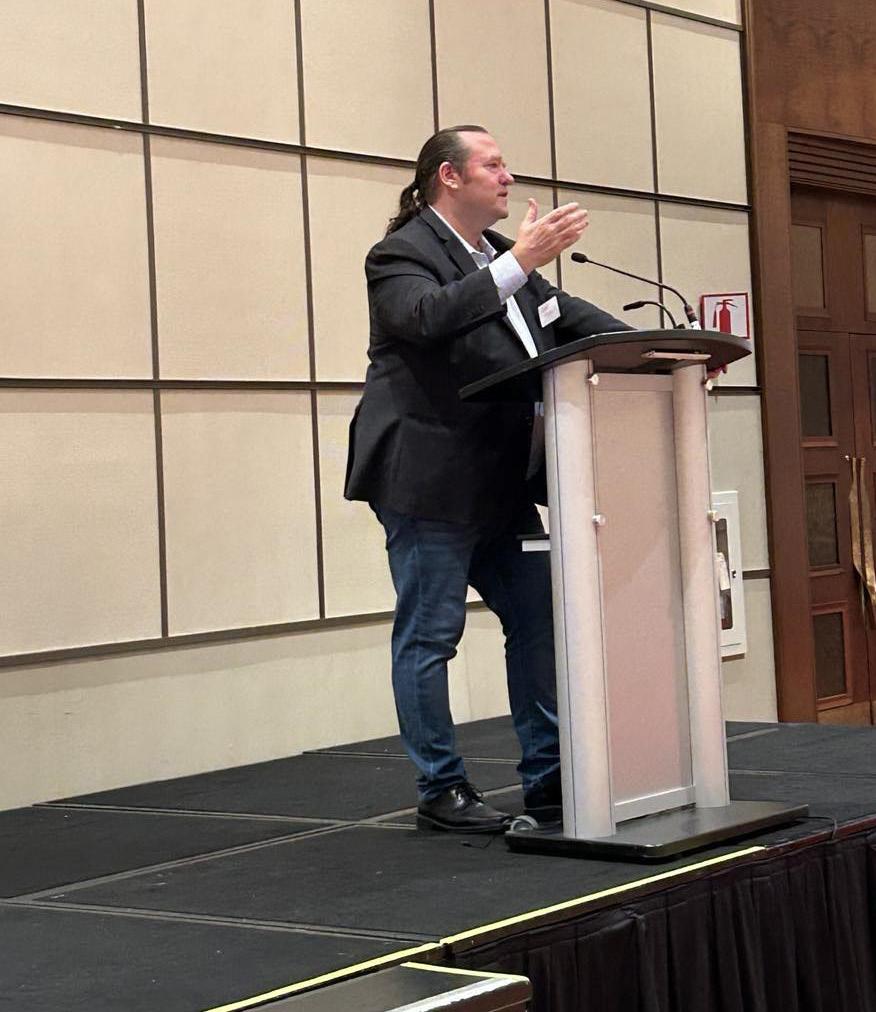
Ottawa and Montreal have some of Canada’s highest rates of human trafficking, which is most commonly sexual exploitation by force or deception. According to a 2014 national task force, about half of trafficking victims are Indigenous women and girls. Snowboy explained that traffickers often take the form of boyfriends who use women’s information against them in coercive tactics.
To combat these risks, the symposium shared resources like human trafficking organization VoiceFound, the local Native Friendship Centre and university Indigenous support services. The Justice Department distributed hundreds of small alarms that can scare away potential attackers.
“While students are pursuing their dreams, we want to make sure someone has their back,” said Cree Justice Director Donald Nicholls. “We asked the EEPF [Eeyou Eenou Police Force] to reach out to the local police so if there’s any sort of incident it’s on their radar. We want people armed with knowledge – there’s a network of support there.”
Nicholls said that Cree Justice has worked with Patrouilles conjointes autochtones, a special Montreal police unit working in partnership with the Native Friendship Centre, which in some cases has found Indigenous women before they disappeared. Nicholls also identified resources like the local CAVAC office, which offers a uniquely Cree approach for crime victims and witnesses.
“You’re part of a community of support and we want you to realize the whole Nation is behind you, wanting you to succeed,” Nicholls told attendees.
This collaboration between the school and health boards with Cree Justice and other entities is a recognition that the safety and success of students are a shared responsibility. Discussing the dangers of opioids, Cree Health Board Chair Bertie Wapachee shared the growing range of health services available to urban Crees.
“There are risks we have to keep in mind for every point of service to ensure our people are taken care of,” Wapachee said. “It’s always good to be more prepared with a centralized system for those types of situations.”
The health board is expanding alliances with urban healthcare services, including agreements with pharmacies, optometrists and dental clinics. Wapachee said Montreal’s new downtown Indigenous health clinic is a promising alternative to busy hospitals.
“The caregivers, who we used to call escorts, could go to the clinic without having to wait 20 hours to be seen,” suggested Wapachee. “Hopefully that kind of service could expand to Ottawa. We have small service agreements with the schools that will be available to the Crees soon.”
While “building resilience” began with the Missing and Murdered Indigenous Women and Girls movement, based on Snowboy’s past experience as violence prevention coordinator in Sudbury, the symposium offered self-care and mental health workshops throughout the day. Massage therapy was also available, as was an Elder for emotional support.
“There was a whole presentation on art therapy, imagery students can transfer from their emotions to paper,” said Darryl Diamond, post-secondary student services coordinator. “Expression helps define what you’re experiencing or struggling to understand. The learning curve is high, the cultural adjustment is overwhelming at times.”
Further safety symposiums are planned for Montreal on October 26, followed by North Bay. Their message is not to let modern risks prevent anyone from achieving their goals but to be empowered by awareness and Cree cultural unity.
“When I left for college at 17, my late grandmother would always tell me in Cree please take care of yourself,” Diamond shared with students. “It was so endearing because she saw her children leave for residential school. Those words still stand today. There is a cultural significance in wanting our young people to come home safely.”


Here’s another edition of the Nation’s puzzle page. Try your hand at Sudoku or Str8ts or our Crossword, or better yet, solve all three and send us a photo!* As always, the answers from last issue are here for you to check your work. Happy hunting.
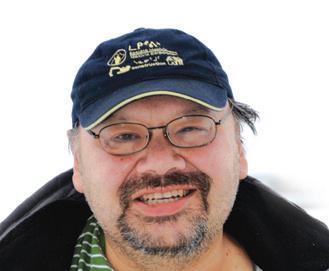

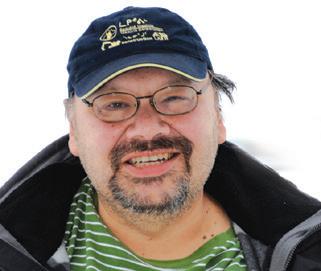
AThis turkey is stuffed
by Sonny Orr
s Thanksgiving rolls around, I think that somehow that tradition doesn’t really connect with me. I have a lot to be thankful for, but this holiday celebrates something that just doesn’t jive. Thanks for giving it to you, this means more to me, rather than thanks for you giving me something and we should celebrate that instead.
Yeah, it’s a long dispute about who should be thankful here and it goes way back to before our great-grandparents were born, when a kind gesture later expanded into a mistaken massive giveaway of just about everything we had.
Not that I’m not in favour of a holiday per se, but I wish that the idea behind the Thanksgiving tradition be adjusted to what actually it was meant to be in the first place – a grand thanks to the First Peoples of the lands, to have compassion to feed complete strangers so that they could survive this “harsh” new world many centuries ago. The spirit of collaboration and brethren kinship was touted as the way the world should be and much later, it became plasticized and commercialized, just like Christmas is carried out today.
Now we are programmed to view the turkey as a rare meal, dished out only a few times a year and with great respect and tradition. It involves the cooking and preparation of grand meals to feed lots of hungry people just before winter sets in.
Today, the turkey is harvested yearround like the chicken but kept in cryo-
I’m not sure if cranes are an endangered species. So, if I get arrested for shooting one and eating it, I’m sorry
genic suspended animation deep in the freezers before it hits the shelves and finally your dinner table in all its stuffed and basted glory. That is, if you are a good cook and are willing to start early in the morning and slave all day at a stove and counter. Thankfully, this only happens only on special occasions.
The turkey, having lived its life just to become mixed with cranberries, potatoes, carrots, peas, stuffing and gravy for your family, can become a weekly fare at home. Imagine, cooking a turkey to feed everyone for a day or two, depending on your tolerance for the bland tasting bird, for only a few dollars a serving.
Turkey stir-fry, turkey breast coated in your favourite flour and water blend, turkey club sandwiches, turkey drumsticks, deep-fried turkey, the list can go on forever. So theoretically, you could buy a turkey once a month and have it instead of chicken. The latter is much smaller and expensive and lasts only for a meal, whereas a turkey provides several meals and then its carcass ends up in a delicious soup.
Turkey should have its place next to the chicken on the shelves and rightfully so. Too bad we don’t have an abundance of wild turkey way up north, but we do have cranes. Recently, I was talking about eating swans when someone suggested I try roast crane. Apparently, it’s much tastier than goose, which is blasphemous thought. But my taste buds are now perking up and I just might shoot one to savour it.
I’m not sure if cranes are an endangered species. So, if I get arrested for shooting one and eating it, I’m sorry. But I should be thankful that I can harvest just about anything that’s edible, just like the days of old, when the wild turkey was a mainstay diet. I’m also thankful for the day off from work more than I am for celebrating some tradition that got us all stuffed. However, in the spirit of giving, share that turkey with those less fortunate and don’t spare the gravy and cranberry sauce. Thanks for the giving!






